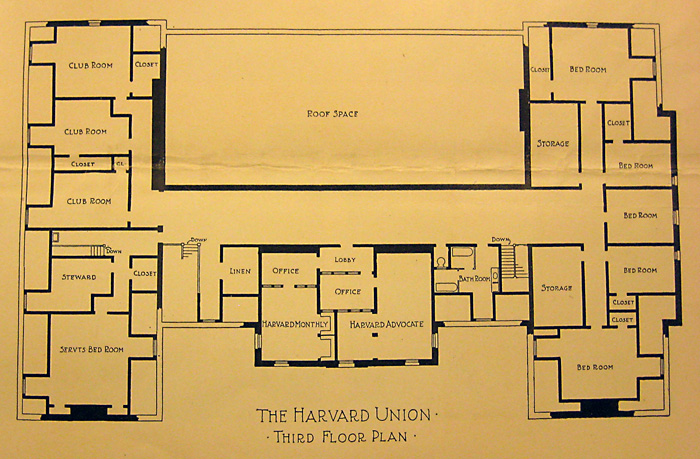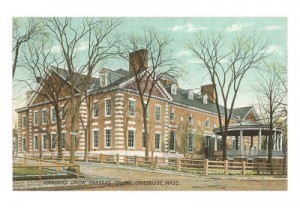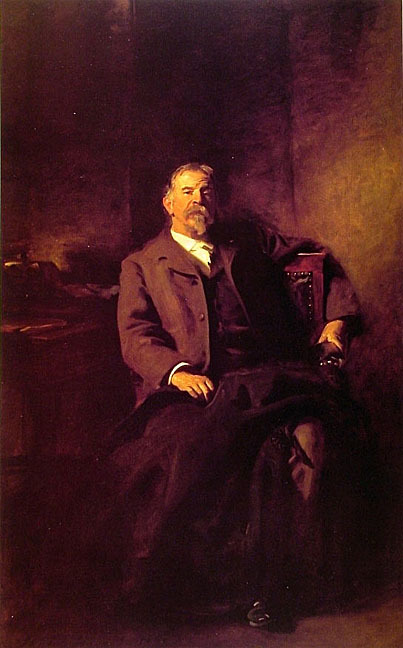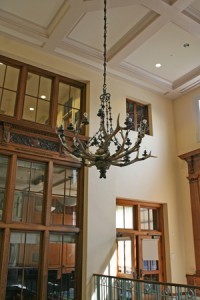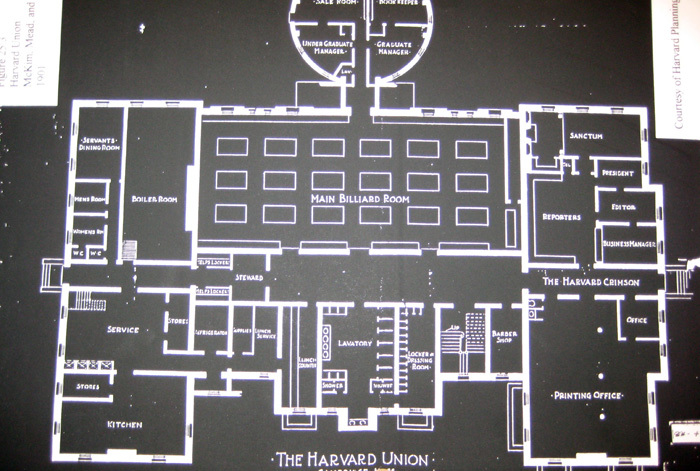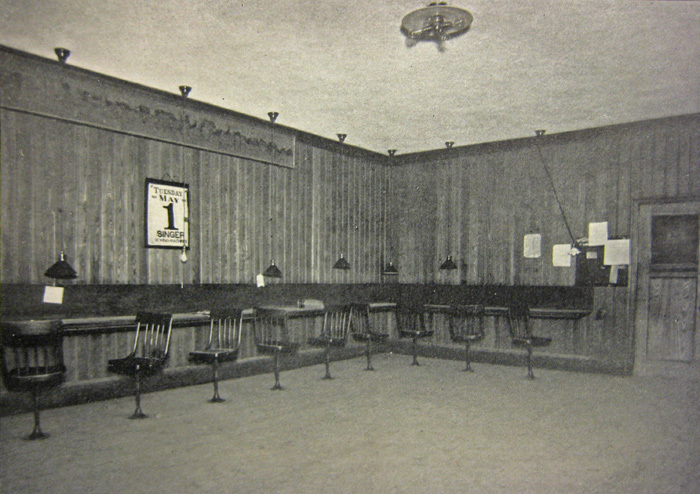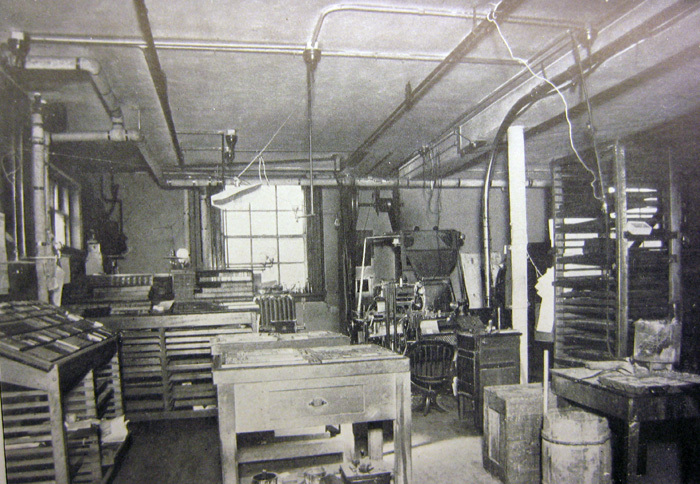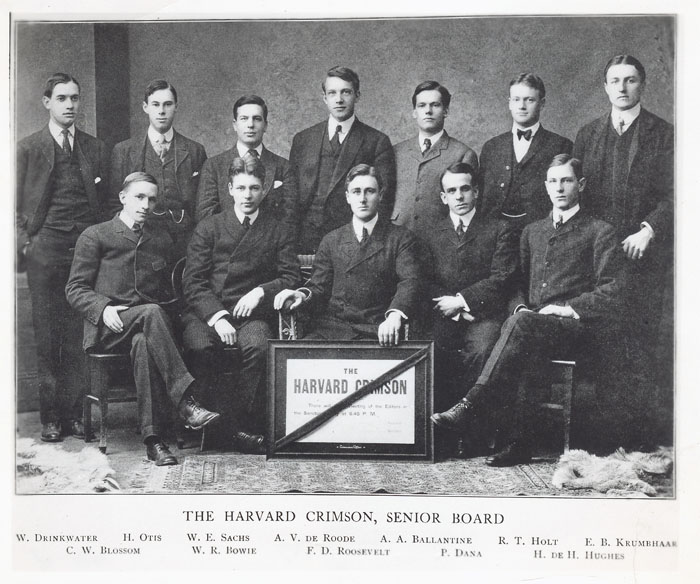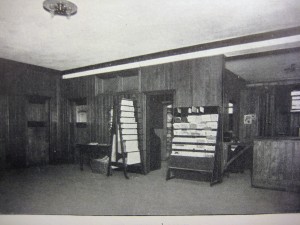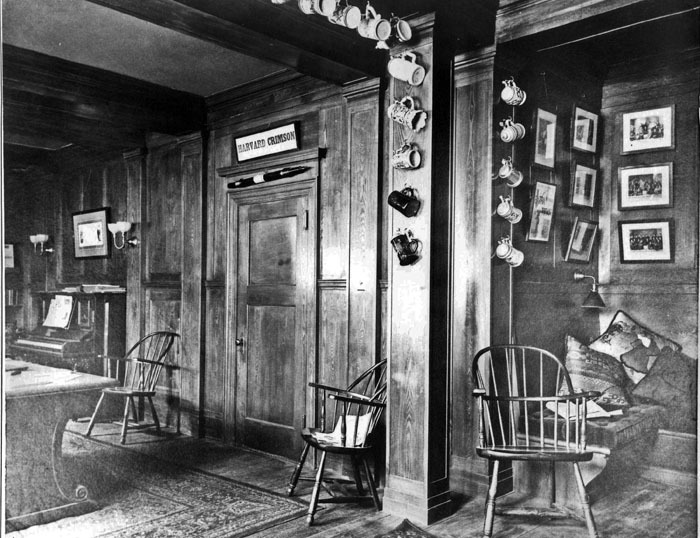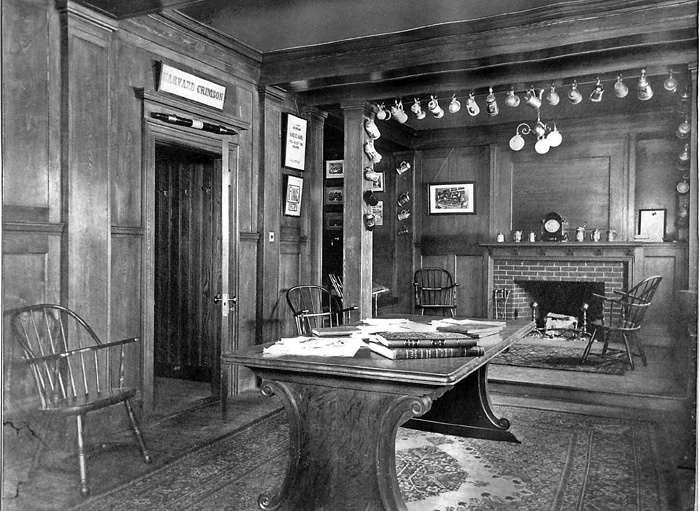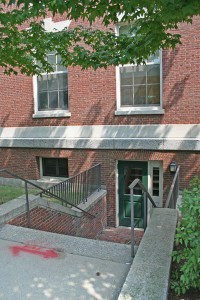Hello Everyone!
Well I don’t need to tell you how warm it’s been in Cambridge, because chances are you’ve been as warm or warmer. Still, despite the heat and the bang-bang-booms coming from the Quincy House renovations next door, we’ve been quietly (or perhaps, more precisely, less-noisily) pursuing our own projects in the Suite:
For one, we’re under construction again in the bathroom, this time to retro-fit some very inconspicuous museum-style recessed lighting into ceiling. Those who have stayed in the Suite overnight have commented that it’s darker than Hades with only one 30-watt Edison bulb as your companion, and it’s true – which is precisely why gentlemen in FDR’s time shaved & dressed in their rooms, where there was better natural light. This concession to modern living – which can be turned on, or not, according to whim – will also allow us to showcase a small collection of patent medicine bottles and other personal products of dubious efficacy from the turn of the century that we’ve been assembling. It’s amazing the wild variety of nonsense that was marketed for health and beauty in FDR’s youth, and this collection, once proudly installed on the bathroom wall shelf, will elucidate this thankfully-passed aspect of late-Victorian life.
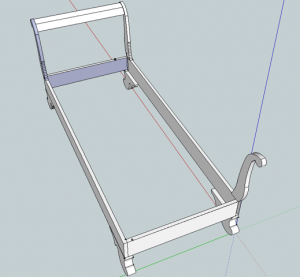 In the study, two complex projects are underway. Master craftsman Lary Shaffer and I are in the process of reverse engineering a period daybed we discovered (or rather, several, in photographs), to make a version for the Suite. Ours has to have several novel features: it needs the look and feel of an authentic period piece, yet it has to disassemble for easy movement when we film the New Fireside Chats – not to mention be both durable and comfortable for visitor use. At left, the very, very beginning of our efforts, as we start to think about how to construct the spindle back that will link the two rear lyre-shaped legs. As usual, this has turned into quite an adventure, one that I’ll be detailing in future posts. We’re hopeful that we’ll have the piece designed, assembled and outfitted for the study by the fall.
In the study, two complex projects are underway. Master craftsman Lary Shaffer and I are in the process of reverse engineering a period daybed we discovered (or rather, several, in photographs), to make a version for the Suite. Ours has to have several novel features: it needs the look and feel of an authentic period piece, yet it has to disassemble for easy movement when we film the New Fireside Chats – not to mention be both durable and comfortable for visitor use. At left, the very, very beginning of our efforts, as we start to think about how to construct the spindle back that will link the two rear lyre-shaped legs. As usual, this has turned into quite an adventure, one that I’ll be detailing in future posts. We’re hopeful that we’ll have the piece designed, assembled and outfitted for the study by the fall.
Also, thanks to major funding from the Lillian Goldman Charitable Trust (and of course, viewers like you), we’ve been able to engage the services of the prestigious Pewabic Pottery in Michigan to produce a period-accurate set of tiles for the fireplace surround. Somewhere in time, no one is quite sure when or why, the tiles were ripped out from all but one of the fireplace surrounds in Westmorly, most likely as part of a general rebuilding of the fireboxes or flues. Fortunately, we still have the intact fireplace in the old porter’s lodge at the base of B-entry, which we’ll be using for a model. This, too, I’ll be documenting as the project unfolds.
Finally, we hoping to complete renovations to the hall outside the Suite to install a small FDR timeline-museum, which will help visitors place the Suite in the context of FDR’s life and presidency. With the assistance of the FDR Presidential Library and Museum, we’ve selected the images for the timeline, and will be mounting them on the wall outside the Suite, along with improved lighting and seating.
See, we have been busy!
Finally, we’ve some new acquisitions to show you. Obviously as the physical restoration of the Suite winds down and we switch over to our educational and philanthropic activities (for more on that important mission, see here) the new items we acquire become fewer and fewer. Still, we’re on the active hunt for rare pieces that either have a direct Harvard/FDR connection, or that help elucidate life at FDR’s Harvard – and how very different that life is from today’s. Here are four great items we’ve recently discovered:
 OK, any guess as to what this is?
OK, any guess as to what this is?
Hint: it’s glass, exactly the size of a cigar, and missing a small cork on the left end…
Thinking… thinking…
If you guessed cigar flask – which I’m sure you didn’t! – you’d be correct. This type of small novelty flask was very common in the late Victorian era. Drinking hard liquor in mixed company was frowned upon, but at the same time, such alcohol was de rigueur at most social events, so what to do? Why, carry this tiny little flask in your vest pocket, that’s what, which to all the world looks like a cigar; then when the ladies aren’t looking, bottoms up!
 Here’s a wonderful piece that came to us as a gift from Dr. Cynthia Koch, Past Director the FDR Presidential Library, and her husband Eliot. Though many people think of Stetsons as big floppy western hats, that was only one – albeit the most famous – of their products. Founded in 1865, the John B. Stetson Company began when its eponymous founder headed west and created the original hat of the frontier, the “Boss of the Plains.” Stetson eventually became the world’s largest hat maker, producing more than 3.3 million hats a year in a factory spread over 9 acres in Philadelphia. This particular hat, in its absolutely brilliant red box, is known as a boater, and was common apparel for young men in the warmer months from the FDR’s Harvard days well into the 20s. As it turns out, “our” hat was simply predestined to be in the Suite: I first saw this Stetson in an antiques store in Hudson, New York, and was immediately interested. The seller however named a price I thought unreasonable, and refused to haggle, which is just not “the way” in these kinds of deals – I was put off, and left. Almost a year later, Dr. Koch spied this same hat, still on the shelf in the same store, and thought it would be perfect for us. She immediately called me, and began to describe the “wonderful hat I found, in a well-preserved red period box…” I interrupted, completely amazed: “Don’t tell me you’re at such and such antique store in Hudson!!?” And the rest, as they say is history. Dr. Koch however, proved no better bargainer than I, for the seller again refused to budge and she was forced to pay full price. I take some rather perverse satisfaction in the fact both stubborn seller and store are now gone, but not before we got our hat. Thanks again, Cynthia and Eliot!
Here’s a wonderful piece that came to us as a gift from Dr. Cynthia Koch, Past Director the FDR Presidential Library, and her husband Eliot. Though many people think of Stetsons as big floppy western hats, that was only one – albeit the most famous – of their products. Founded in 1865, the John B. Stetson Company began when its eponymous founder headed west and created the original hat of the frontier, the “Boss of the Plains.” Stetson eventually became the world’s largest hat maker, producing more than 3.3 million hats a year in a factory spread over 9 acres in Philadelphia. This particular hat, in its absolutely brilliant red box, is known as a boater, and was common apparel for young men in the warmer months from the FDR’s Harvard days well into the 20s. As it turns out, “our” hat was simply predestined to be in the Suite: I first saw this Stetson in an antiques store in Hudson, New York, and was immediately interested. The seller however named a price I thought unreasonable, and refused to haggle, which is just not “the way” in these kinds of deals – I was put off, and left. Almost a year later, Dr. Koch spied this same hat, still on the shelf in the same store, and thought it would be perfect for us. She immediately called me, and began to describe the “wonderful hat I found, in a well-preserved red period box…” I interrupted, completely amazed: “Don’t tell me you’re at such and such antique store in Hudson!!?” And the rest, as they say is history. Dr. Koch however, proved no better bargainer than I, for the seller again refused to budge and she was forced to pay full price. I take some rather perverse satisfaction in the fact both stubborn seller and store are now gone, but not before we got our hat. Thanks again, Cynthia and Eliot!
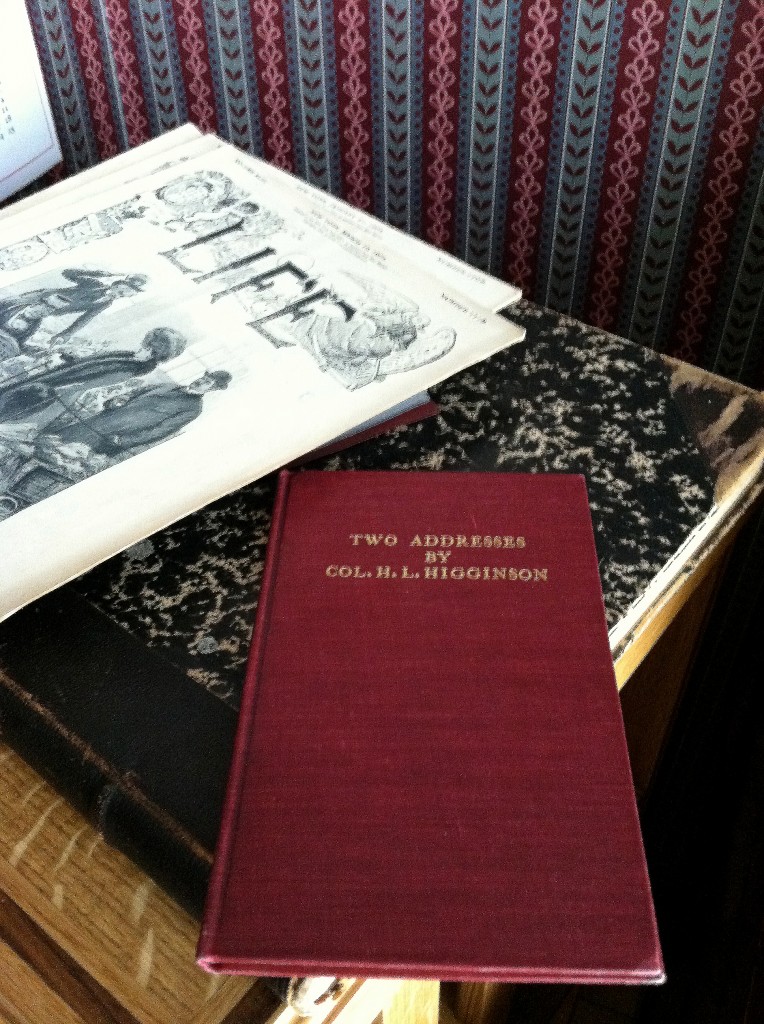 Considering the large number of objects in the Suite – heading towards two thousand, if you can believe it – one of the things we’re strangely lacking is period books. The reason is twofold: the first is, simply, the cost of good volumes. FDR, as you probably know by now, was an avid bibliophile who began collecting books while at Harvard. He was on the library committee for the Harvard Union, and also served as the librarian for the Fly Club. (Club libraries, though diminishing in importance by FDR’s time, were still much valued as a source of more popular, less serious reading material than was found in Harvard’s library.) Given a rather refined taste, and a hefty budget supplied by Sara, FDR proved a discriminating buyer, and we find ourselves hard-pressed financially to duplicate his acquisitions. Secondly, we’re constrained to pre-1904 volumes that reflect FDR & Lathrop’s taste and interests – not something that pops up too often at the local used-book seller. But here’s a slim little volume that meets both criteria: Two Addresses by Col H. L. Higginson (1902). Higginson was one of Harvard’s most enthusiastic benefactors, giving both the money for Soldiers Field, as well as the funds for the Harvard Union. This book contains the text of Higginson’s two dedication addresses, and is particularly appropriate for the Suite as FDR was in the audience for the Union dedication in October, 1901. This is a volume he certainly knew of, most likely owned, and most certainly helped acquire for the new Union Library, which would function as Harvard’s main undergraduate library until the opening of Lamont in 1947.
Considering the large number of objects in the Suite – heading towards two thousand, if you can believe it – one of the things we’re strangely lacking is period books. The reason is twofold: the first is, simply, the cost of good volumes. FDR, as you probably know by now, was an avid bibliophile who began collecting books while at Harvard. He was on the library committee for the Harvard Union, and also served as the librarian for the Fly Club. (Club libraries, though diminishing in importance by FDR’s time, were still much valued as a source of more popular, less serious reading material than was found in Harvard’s library.) Given a rather refined taste, and a hefty budget supplied by Sara, FDR proved a discriminating buyer, and we find ourselves hard-pressed financially to duplicate his acquisitions. Secondly, we’re constrained to pre-1904 volumes that reflect FDR & Lathrop’s taste and interests – not something that pops up too often at the local used-book seller. But here’s a slim little volume that meets both criteria: Two Addresses by Col H. L. Higginson (1902). Higginson was one of Harvard’s most enthusiastic benefactors, giving both the money for Soldiers Field, as well as the funds for the Harvard Union. This book contains the text of Higginson’s two dedication addresses, and is particularly appropriate for the Suite as FDR was in the audience for the Union dedication in October, 1901. This is a volume he certainly knew of, most likely owned, and most certainly helped acquire for the new Union Library, which would function as Harvard’s main undergraduate library until the opening of Lamont in 1947.
And finally:
What a stunner! This is a very rare piece, both because of size (it’s 11″ tall by 6″ wide) and function: a heavy ceramic water pitcher. It came out of an estate in California, and is exactly of the period. How do we know that? Well in this case the pitcher is labelled on the bottom: “Royal China Pottery, England,” which sets parameters for the date. But even if it weren’t, the style and typography of the Harvard pennant would give it away. After 1910 or so, the flag font and shape changes, (and continues an every-decade-or-so metamorphosis right until the present day), giving the practiced eye a pretty precise measurement of age.
(It’s amazing the strange talents you acquire when putting together a project like this!)
Well, that’s all for now. I’ll be back in touch as the weather cools down with news on our fall events, including the FDR Memorial Lecture, and our plans for the Big Game.
Until then, please remember that none of this gets done without your continuing help.
Some People Read History. Others Make It.
Come make a little history: support the FDR Suite Foundation!
![]()

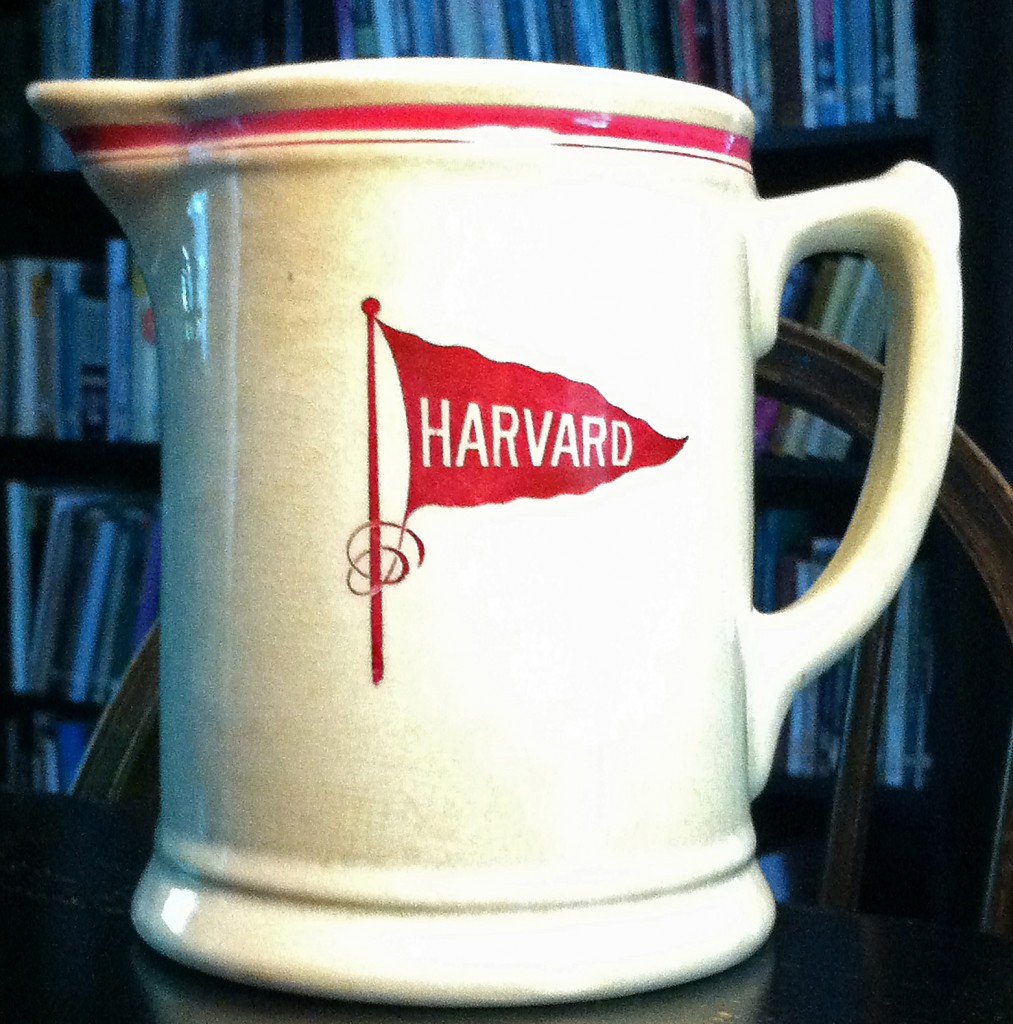
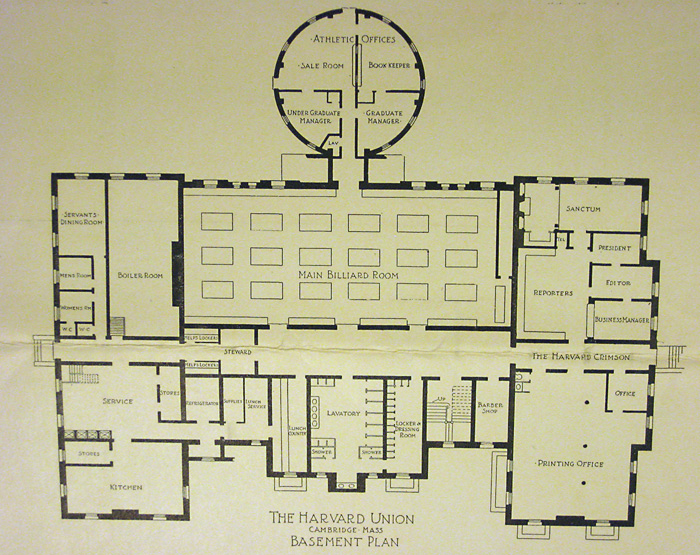
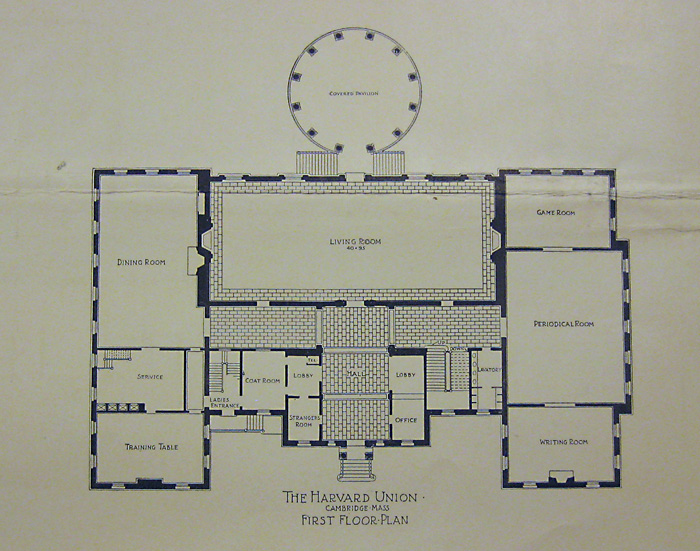
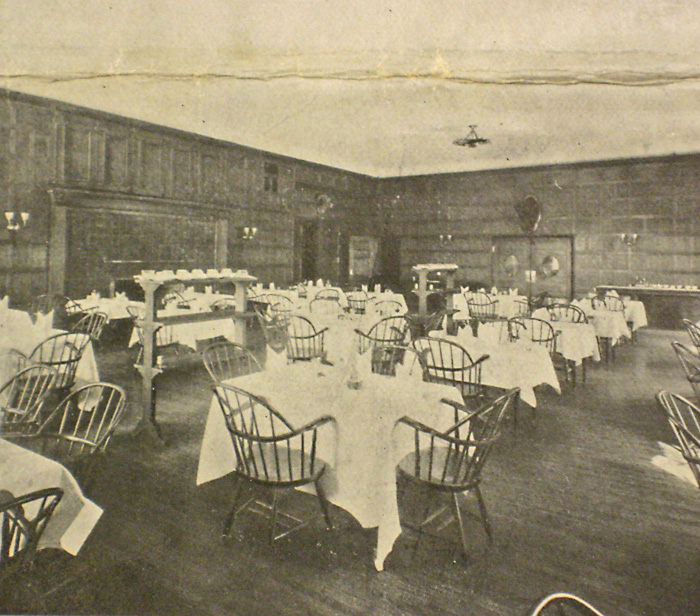
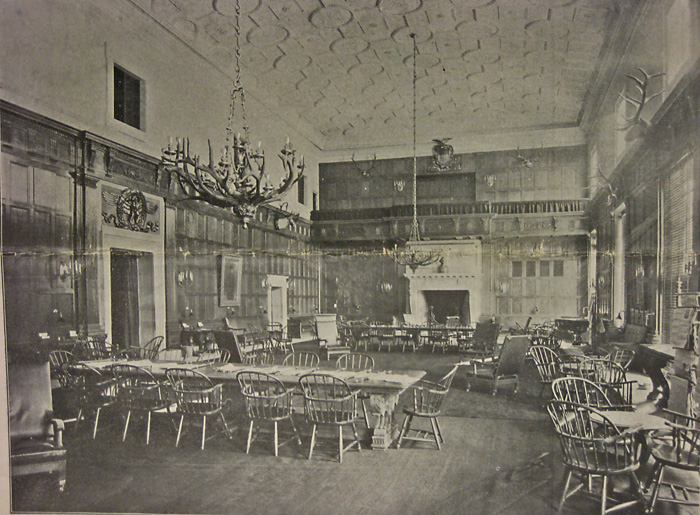
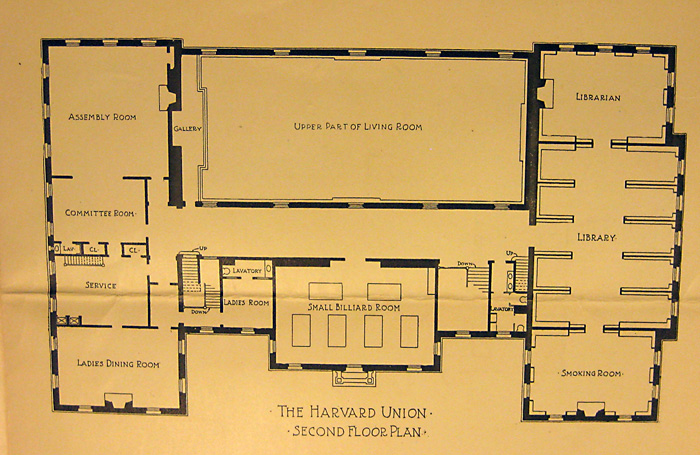
 The top floor featured guest rooms for visitors (sans private bath, as was the custom of the day) plus the relatively modest homes of the Harvard Monthly and Harvard Advocate.
The top floor featured guest rooms for visitors (sans private bath, as was the custom of the day) plus the relatively modest homes of the Harvard Monthly and Harvard Advocate.